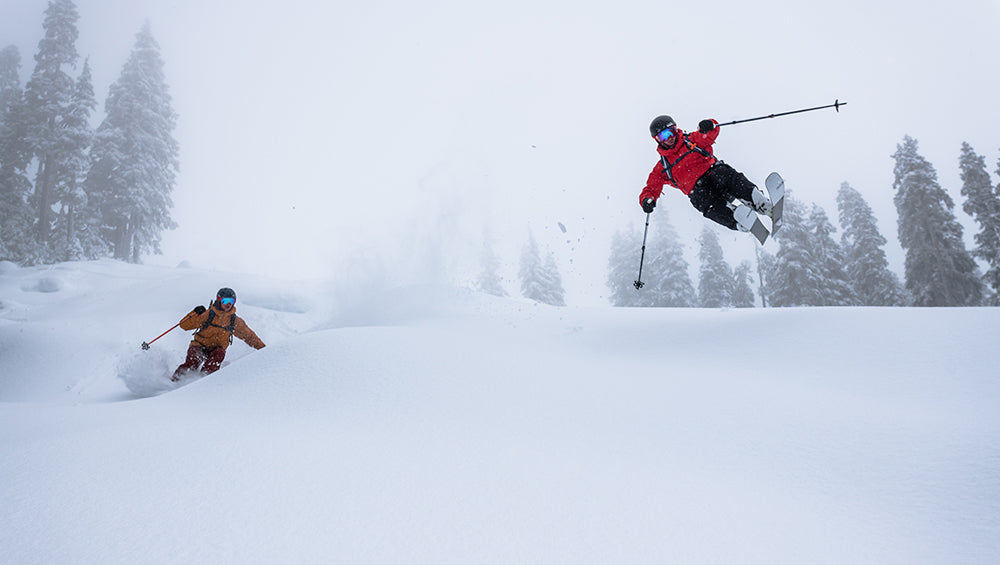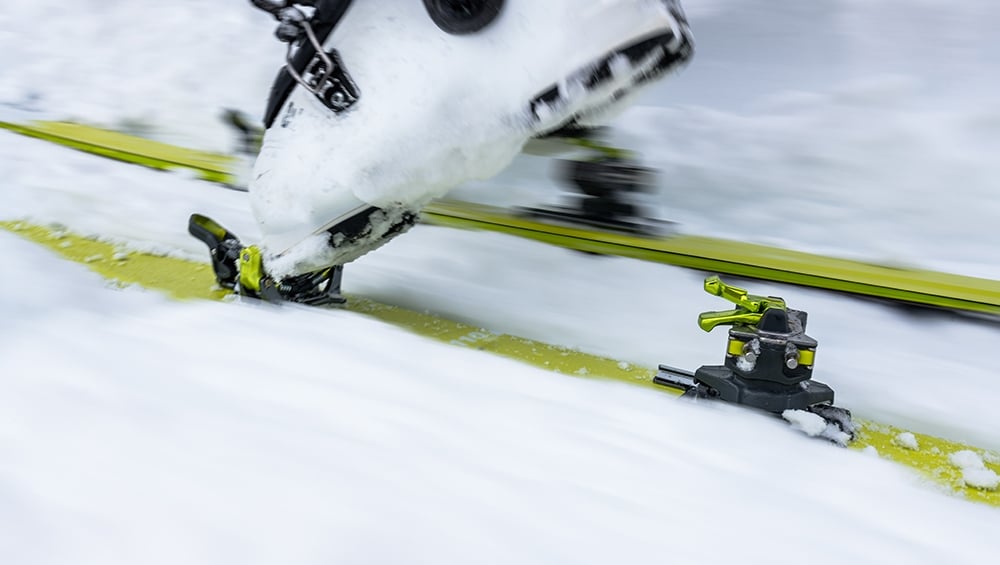
Whether you’re a bonafide weight weenie or a hard-charging ‘performance first’ freerider, you secretly know as well as we do that the weight and performance of your gear are BOTH critical factors for making the most out of your backcountry ski missions.
When we are designing new products at G3, we zero in on real-world problems and seek the simplest engineering solutions to overcome those problems. To do it right, backcountry gear needs to be both lightweight and easy/efficient to use, so rather than blindly shaving grams everywhere we can, we aim for a ‘realistically light’ weight target. Fortunately, a gear design process that simplifies the engineering allows us to build lightweight gear without sacrificing the performance you need for a big day in the backcountry. Instead of shaving important parts or compromising on features, our ‘simplicity rules’ mantra keeps the gear high functioning at a lighter weight.
BUT DOES WEIGHT REALLY MATTER?
You’d better believe it. Especially on your feet. It’s one thing to pack a couple extra beers and bacon in your touring pack, but that same weight on your feet would be a whole other story.
Every 100 g on your feet costs 1% in VO2 efficiency. It’s one of the reasons running barefoot is more efficient than running shod (on the appropriate terrain of course). Ski mountaineer Eric Carter also blogged about the efficiency of lighter weight on your feet. Sorry for the nerdy science stuff, but we backcountry skiers carry a lot on our feet so this limits how much we can do in the mountains.
There is also a study from NATICK indicating that loads carried on the feet require about 5 times more energy than if they’re carried on the torso. While it is sometimes challenged by scientific purists because of a low sample size and variations due to terrain, gradient, speed etc., the 1kg on the feet = 5kg in the pack adage is accepted as a good general rule of thumb.

ZED 12
Starting with the proven platform of the ION, we looked at every part, every mechanism, and every screw to evolve the idea of a fully-featured...
$229.00 Shop ZED 12While the articles above feature shoes and ski boots, they same can of course be said for your ski touring bindings, skis, and skins that you lift or drag with your legs, step by step by step, hour after hour on your way up to a peak. You can't put your boots, bindings and skis in your pack, so you'd better make sure they're light!
SKIMO points out that the weight of a frame binding would be 14% less efficient than a lightweight binding, and that’s before you even consider the binding’s performance efficiencies such as ease of transitions, the pivot point, and more. To put it in real world skier terms, on a 3 hr tour with light bindings you'd hit the summit 25 minutes earlier, with more time to shred some extra lines in the afternoon.

EVAN STEVENS AND TANNER FLANAGAN ON ONE OF MANY DEEP DECEMBER CLIMBS, MAKING THE MOST OF AN EPIC WEEK WITH THEIR NEW LIGHT GEAR. PHOTO BY FRED MARMSATER
IS WEIGHT THE ONLY THING THAT MATTERS?
Definitely not. The key is optimizing weight without sacrificing downhill performance, because that’s where the real fun starts. That coveted sweet spot is what makes us so proud of the new G3 ZED 12 bindings.
In the world of lightweight backcountry gear there are a lot of “ultralight” products that make major sacrifices in downhill performance, user experience, and durability. The use of U-springs and limited adjustability in bindings or thin bases and less-than-durable cores in skis are perfect examples of this. By doing so you sacrifice on the safety and longevity of your gear and ultimately the fun you can have in the mountains.
In a league of its own, the ZED 12 out performs its light weight competitors while saving valuable weight (and with it your legs) compared to other fully featured tech bindings. Even at a feathery 345g per binding, it still boasts 10mm of forward pressure for consistent release, optimal toe elasticity to absorb energy and avoid pre release, optional brakes, crampon compatibility, and roller pins in the heel for superior durability and reliability over U-spring competitors.
The ZED will get you to that next peak, not 14% shy of the summit. And armed with this powerful feature set, you’re good to go when it’s time to drop in. As for the extra beers in the backpack, we’ll leave that up to you.

WHAT GOES UP MUST COME DOWN. OR NOT? MATT FRANCISTY POPPING THROUGH THE PILLOWS ON A NEW SEEKR/ZED 12 COMBO. PHOTO BY REUBEN KRABBE





